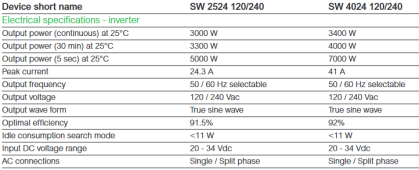I personally would not agree with that. I think that caution is a response to otherwise poor system design. An important issue with inverter size is that in general the inverter always consumes some power (idle load) just being left running, even if it is powering nothing, and the size of the inverter is proportional to the size of the idle load. With other small-system DIYers here, I've seen their low-budget inverters as being the single largest load on the systems over a 24hr period.
This appears to be the most problematic with newer low-budget AiO inverters, which self-consume hundreds of watts per hour, with 24hr consumption values in the 3-7kWh range.
With your system, with 1500+W of solar, I don't think you'll be having any problems with background consumption. I'll recommend the inverter that I myself am using.
Free Shipping! Schneider Electric Conext SW4024-120/240 Inverter/Charger, 4000W, 120/240VAC, 50/60Hz, 30A Transfer, 24VDC, 90A Charger, RNW8654024

ressupply.com
Being a quality, low-frequency inverter, it supports the starting surges of all my power tools, and it has a idle consumption of only 11W. Note though that this inverter is designed to be hard-wired directly into your electrical panel, so it does NOT have NEMA sockets.
View attachment 78430




